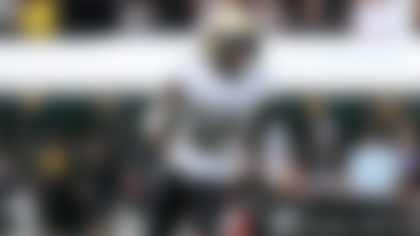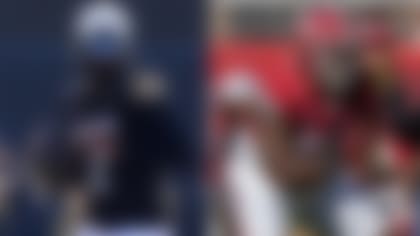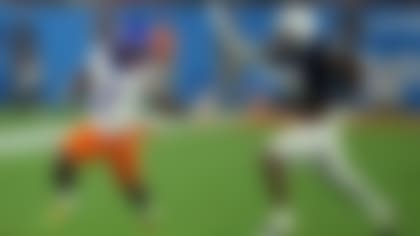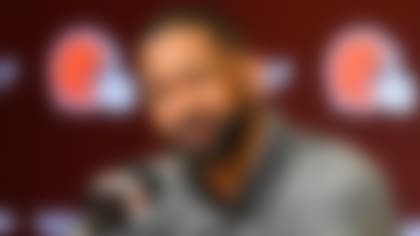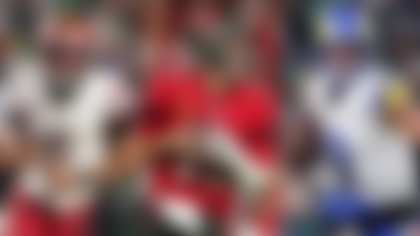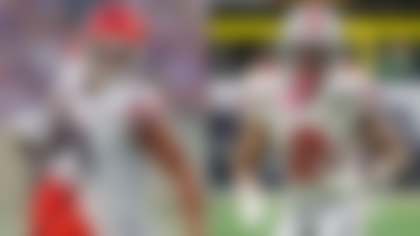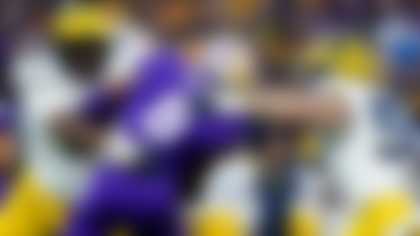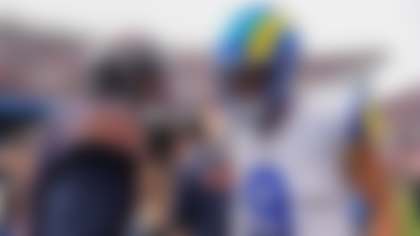HOUSTON -- It was only a few non-contact drills. That's the critical thing to remember about the first practice that outside linebacker Jadeveon Clowney has participated in since undergoing microfracture surgery on his right knee last December. It was a major step in his rehabilitation process, but only one of many more to come. The real challenge he faces involves tempering his expectations and understanding that there's no reason to hurry through this part of his recovery.
For those interested in the exact number, Clowney played in all of 146 snaps for the Houston Texans last season. That's well short of what was expected from a player who was the first overall selection in the 2014 NFL Draft and a breathtaking talent hyped as the second coming of Lawrence Taylor. The minute Clowney's rookie season was lost to that frustrating knee injury, the questions emerged as to what type of player he would be moving forward. It's those same questions that he can't use as ammunition for what he's trying to do with his second season in the NFL.
The fact is that microfracture surgery historically has been a tricky procedure to recover from for most athletes. Even more complicated is how a young player with a slow start to a pro career supposedly destined for superstardom deals with such disappointment. That desire to jump-start his recovery was apparent when Clowney informed reporters about a conversation he had with Texans head coach Bill O'Brien during practice on Monday.
"I was like, 'Coach, let me get some pass rush today,' " Clowney said. "He was like, 'No, it's your first day out here. We're going to take it slow.' I was like, 'Man, what am I going to do now this whole time?' "
The answer to that is obvious.
Wait. Don't push it. Understand that the season is long and your team has made a huge investment here.
The Texans can see that the best way to handle Clowney is to take this day by day. Given that he's 22 years old and eager to show people all that he can be, he occasionally might have a harder time getting his head around that concept.
Monday provided a glimpse as to how slow this process might be for Clowney early on. He participated in a walk-through with the team, worked through individual drills with linebackers coach Mike Vrabel and then watched everything else. To Clowney's credit, he looked like a young man grateful to simply be standing on the field with his friends. He seemed to see the bigger picture in all this -- that everything is geared toward him being available in some form for the Texans' season opener against the Kansas City Chiefs.
It was a positive sight, given what Clowney has gone through -- his knee was still swelling during the Texans' organized team activities earlier this offseason -- but it also must be a strange situation for him to accept. Anybody who's followed Clowney's career knows how dominant he could be. He was the South Carolina All-American defensive end who once hit a Michigan running back so hard that he sent the player's helmet flying 10 yards in the other direction. He was the 6-foot-5 kid who weighed in at the NFL Scouting Combine at 266 pounds before running the 40-yard dash in a jaw-dropping 4.53 seconds. When you watched Clowney back then, you thought one thing:
What's going to stop this guy?
Clowney's body turned out to be the unforeseeable culprit. He first injured that knee in the first half of Houston's season-opening win over the Washington Redskins. The Texans attempted to repair that lateral meniscus tear with arthroscopic surgery, but the pain never vanished from the joint. By Dec. 8, after playing in three more games, Clowney returned to the operating table for his second procedure of the season, this one being the microfracture surgery that involves poking holes around the knee to increase blood flow that ultimately heals cartilage.
It's a safe bet that Clowney knew the history of microfracture procedure. (It's an operation that used to be deemed a last resort for injured players but has since helped some stars return to the field, including All-Pro cornerback Darrelle Revis.) It's also apparent that self-doubt crept in for a player who's long been able to do whatever he wanted on a football field. Clowney admitted there were days when he didn't want to endure training sessions, but support from family and friends kept him grinding. "They got me out of the house and I just got up here [to the team's headquarters]," Clowney said. "Once I was done, I was like, 'Man, I'm glad I did it today.' "
Clowney essentially was following the same advice that O'Brien had given him after the operation. O'Brien had told Clowney how to prepare for this rehab process, to put his head down and plow forward. They devised a plan for how Clowney would make his comeback and they didn't discuss any goals that seemed unrealistic. The key was that Clowney had to accept that this season wouldn't be the only one that defined his future. If he played this right, there would be many more years to make people forget how his rookie campaign ended.
"The plan is to string days together," O'Brien said. "There will be days when he will be a little sore. He will have to deal with that. We have to do a great job of easing him back into this. We can't throw him out there for 60 reps in the first practice. We have to have a good plan for him and we do. And he understands that plan."
That plan involved getting Clowney back to practice on Aug. 17, but the more interesting aspect of this story is how he handles things moving forward. During his press conference on Monday, he openly said he's "very anxious" for contact because he's "been hitting these dummies so long [and] nobody hits back." The way O'Brien spoke, it sounded like he will be very cautious with Clowney until the regular season. This is one of those situations where both coach and player have to feel their way through it, with a limited role for Clowney in the season opener being a very real possibility.
The good news for Clowney is that people should still remember what he could do when healthy. As O'Brien said, "When he played last year, he did some really good things. He was disruptive. He's explosive. And he's a very smart player. Our expectations for him are to get [him] back into football-playing shape. Let's take on blockers. Let's rush the passer. And as we get closer to game time, let's see where he's at."
That's a sensible approach, one that will be closely followed by anybody who cares about what happens to the Texans this season. Clowney can see the possibilities in his returning to a Houston defense that ranked seventh in the NFL in points allowed last year, and he's already shown critics of his work ethic that he has more true grit in him than they suspected. But Clowney's return to prominence won't solely be determined by all the effort he put into the past eight months. It also will come down to something that is usually the most underrated aspect of recovery and the one asset he will need in heavy supply: patience.
Follow Jeffri Chadiha on Twitter @jeffrichadiha.

